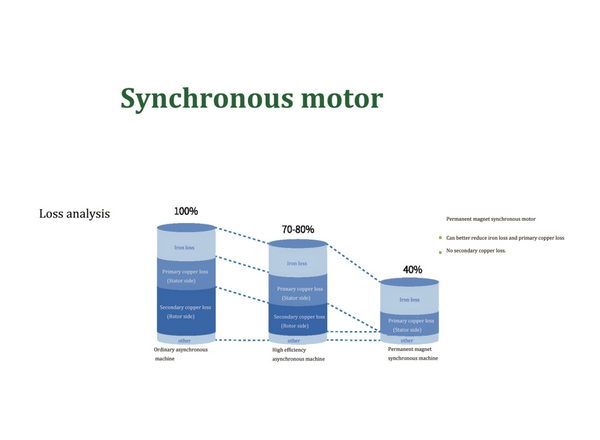 Electric motors are used to run innumerable appliances and equipment in today’s industrialized world. Silent and reliable, they have been a machinery staple for many years and are often found in compressors. However, they present some drawbacks. Permanent magnet motors offer excellent performance without inadvertently damaging compressors, leading to less wear and a longer system lifespan.
Electric motors are used to run innumerable appliances and equipment in today’s industrialized world. Silent and reliable, they have been a machinery staple for many years and are often found in compressors. However, they present some drawbacks. Permanent magnet motors offer excellent performance without inadvertently damaging compressors, leading to less wear and a longer system lifespan.
What are the drawbacks to induction motors?
Unlike permanent magnet motors, induction motors use two parts: a stationary stator and a rotating rotor. The electric current passes through the stator to produce a rotating magnetic field. This in turn induces a current in the rotor, which creates a second magnetic field. The interaction between these two magnetic fields produces turning torque, causing the rotor shaft to turn.
But the induction motor shaft and the magnetic field do not turn at the same pace. Due to losses in bearings and other elements, the rotor cannot keep up with the field and is usually below the magnetic field synchronous speed by approximately 1-5%. This is called slip. Over time, slip can cause damage to your motor and compressor.
The benefits of permanent magnet motors:
High-speed permanent magnet motors offer increased energy efficiency compared to conventional asynchronous induction motors. A permanent magnet motor has air-cooled winding heads and water-cooled housing for reliable operation, and extremely low loss lamination grade material in the motor core results in low iron losses. Non-contact magnetic bearings are used to hold the motor shaft in place, so there is less vibration and no friction between the components, resulting in less wear.
Centrifugal compressor utilizes a permanent magnet motor for superior performance and extended lifespan. For more information on our centrifugal compressors or to learn more about permanent magnet motors, contact us today.